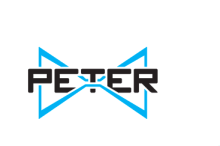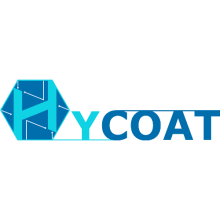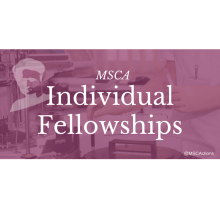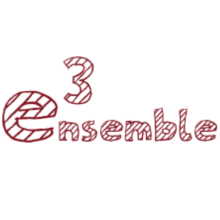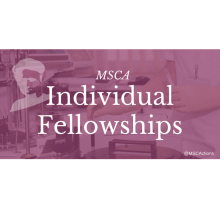Projects
Projects at a Glance
PETER-Plasmon Enhanced Terahertz Electron Paramagnetic Resonance
We propose to establish Plasmon -enhanced Terahertz Electron Paramagnetic Resonance spectroscopy and scanning microscopy as a unique Electron Paramagnetic Resonance (EPR) platform for high-sensitivity local analysis of paramagnetic organic and inorganic species and materials. Here, we will deliver novel hardware and infrastructure providing ground-breaking innovation in the magnetic sensing and imaging.NS-PC - New frontier of nano-space using protein crystals for telecommunication and medical applications
Nano-spaces based on organic molecules, including porous coordination polymers and metal-organic frameworks (PCP/MOF), find applications in storage, separation, and transport. Protein crystals offer larger nano-spaces (4.5-100 nm) and biocompatibility. The NS-PC project focuses on synthesizing, characterizing, and applying protein crystals, utilizing cage-shaped proteins to confine organic molecules or nanoparticles. Peptide-functionalized proteins enable crystalization through conventional and gene-engineered methods, forming binary or ternary protein crystals. These crystals could serve as containers for molecules or scaffolds for nanostructures. Protein crystals are proposed for developing periodic magnetic nanostructures, aiding magnon physics and microwave device innovation. Biocompatibility opens avenues for drug delivery and imaging agents, potentially revolutionizing healthcare with larger-capacity carriers. The project bridges fundamental research and practical applications.
HYCOAT - A European Training Network for Functional Hybrid Coatings by Molecular Layer Deposition
Thin films of hybrid materials engineered at the molecular scale can enable breakthroughs in several economically and socially relevant technological application areas including packaging & encapsulation, electronics, batteries and biomedical applications. With self-limiting binary reactions, Molecular Layer Deposition (MLD) is the ideal deposition technique for growing ultra-thin, uniform, conformal hybrid films with precise and flexible control over the film thickness and molecular-scale chemical composition. The key objective of HYCOAT is to create a group of exceptionally well-trained young researchers who have a deep understanding of all aspects of MLD technology, as well as broad vision on the application potential of hybrid coatings.MATBIOCAT - Design of Hybrid Protein-Inorganic Nanostructured Biomaterials for Advanced Heterogeneous Catalysis
MATBIOCAT focuses on merging synthetic materials with biomolecules to create functional nanostructures, enhancing performance in extreme conditions for biotransformation processes. The aim is to improve biocatalyst stability in organic solvents, high temperatures, and extreme pH values. Three main sections involve enzyme encapsulation in polymeric networks, designing metal-based nano/microstructures, and creating enzymatic bioreactors. Collaboration across enzymology, polymer chemistry, inorganic chemistry, and material science contributes to this multidisciplinary effort. Challenges include ordered placement of biocatalysts in stable films or microstructures to preserve catalytic performance. The project's ultimate goal is to develop advanced biomaterials with improved enzymatic function, holding potential for various applications.
2D-TopSpIn - Spin detection and control in van der Waals materials for the design of spintronic devices.
The experimental confirmation of 2D topological insulators (2D-TI) with unique conductivity properties in 2007 has potential for advanced quantum computers and spintronic devices. Topological insulators conduct at the edge, offering scattering-free, spin-polarized channels crucial for dissipationless electronics. Challenges persist in practical device creation due to technical complexities. Discovery of 2D-TI phases in TMD materials like 1T-WTe2 enables van der Waals heterostructures, promising high-performance electronics and quantum computing applications. This proposal aims to engineer a spintronic device through rationalized heterostructure design, local and mesoscopic property characterization, and multiscale imaging and transport studies.
PROIRICE - Proton-Irradiated Ice: Dynamics and Chemistry from First Principles
Understanding radiation effects on different materials is of paramount importance for many scientific and technological fields like those related to nuclear energy, space industry, laser- and ion-based materials processing and therapeutic applications. The particular case of radiation effects on pure and mixed water ice is very important in Astrochemistry and Prebiotic Chemistry, being water ice present in cosmic dust grains and on the surface of many bodies in the Solar System like asteroids and several satellites (e.g. Europa, Callisto and Ganymede).ENSEMBLES3 - Centre of ExcelleNce for nanophotonicS, advancEd Materials and novel crystal growth-Based technoLogiEs
Within the project an extensive, detailed and robust Business Plan will be developed for setting-up of the Centre of Excellence ENSEMBLE3, with focus on the research excellence and innovation performance in the area of crystal growth-based technologies, novel functional materials with innovative electromagnetic properties, and applications in nanophotonics, optoelectronics, telecommunication, medicine, and photovoltaics.
DELICE- Device oriented molecular spin filter based interfaces
We live in a constantly changing society in which information and communication are at the basis of our economy. To keep progressing is essential to investigate new feasible ways to control and manipulate information in order to develop faster, smaller and less consuming devices. Organic Spintronics has emerged as a promising field to develop low-cost, mechanically-flexible and multi-functional devices in which information is carried not only by the charge but also by the spin of electrons.ALD4MAX- Atomic Layer deposition For tailored bottom-top growth of MAX and MXene films
Atomic Layer Deposition For tailored bottom-top growth of MAX and MXene films.
By funding program
Contact

Yurdana Castelruiz
Projects Manager
+ 34 943574022
y.castelruiz[at]nanogune.eu

